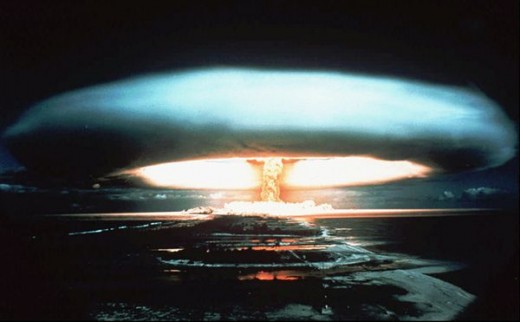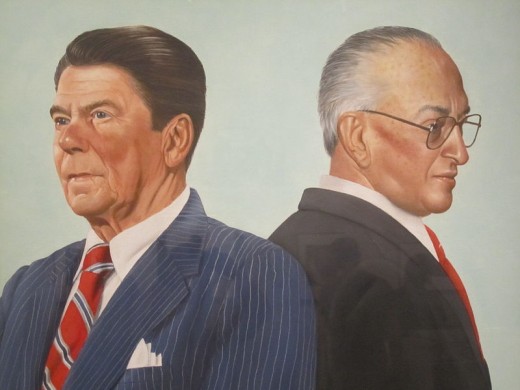- HubPages»
- Education and Science»
- History & Archaeology»
- History of the Modern Era
Able Archer 83: The Forgotten Close Call that Almost Started World War III

If you're a student of world history, there's a fairly good chance that your textbooks described the Cold War and the doctrine of mutually-assured destruction in great detail. For a period of roughly 40 years following World War II, the Earth's two major superpowers, the United States and the Soviet Union, existed in a period of varying degrees of political hostility that were largely kept in check by the fact that both sides possessed enough stockpiles of nuclear weapons to completely annihilate the other side before their own stockpiles could be destroyed. This ensured that an all-out war between the two powers would result in both countries being completely wiped out, along with most of human civilization on the planet. You've also likely heard it said that the event in which the two powers came closest to an all-out war was the Cuban Missile Crisis, in which a fleet of American naval vessels blockaded the island of Cuba in an attempt to prevent its nuclear armament, and squared off with Soviet ships in a tense standoff in the Caribbean Sea.
An argument can be made, however, that an even closer call occurred in early November of 1983, when NATO forces engaged in a ten-day military exercise during a period of very strained relations between the two superpowers. The realistic nature of the operation convinced some factions in the Politburo that it was a ruse designed to provide cover for an actual first strike. In response, Soviet forces put their nuclear arsenals on high alert and made their own preparations for a preemptive strike. With all of the forces of both alliances in readiness and a series of misunderstandings dictating events, it is likely that a single additional misstep on the part of either power could have resulted in total nuclear war.

Background
The early 1980s were a time of great tension between the United States and the Soviet Union. The newly elected Reagan administration oversaw the largest peacetime military buildup in the history of the United States, while the ascension of KGB chairman Yuri Andropov to the office of General Secretary brought with it a new era of paranoia regarding geopolitical developments. By late 1982, it was all but accepted that the policy of détente was over. The United States began to engage in psychological warfare operations, in which they would use naval vessels to access waters close to vital Soviet military infrastructure without being detected as a sign of strength. The Soviets shot down a Korean airliner carrying a number of Americans over the Sea of Japan when it strayed too close to their airspace.
Perhaps the moment of the greatest escalation of tension on the part of the Soviet Union, however, came in late September of 1983, when their orbital missile early warning system detected the launch of an intercontinental ballistic missile from the United States aimed at Russia. The warning and a subsequent one later that day were found to be due to computer errors, but the discovery did nothing to ease the fears of the Soviet military that an attack was imminent. Consequently, they ramped up their attempts to try to detect it as well in advance as possible.
Soviet intelligence agents had, for some time, been monitoring the American military figures and facilities in charge of initiating a nuclear attack through clandestine agents in the United States. This effort was known as Operation RYAN, and its goal was to attempt to determine the likely intent of a nuclear attack, in order to give the Soviet Union the most amount of planning time possible. Of particular note were the operation's directives to its agents to not offer subjective analysis of the events they were observing, only to report events as they were occurring. This would become very important later.

Able Archer Begins
Exercise Able Archer 83 began on November 2, 1983 as a test of NATO's Command, Control, and Communications procedures during a nuclear war. The personnel in charge of the United States' nuclear arsenal, along with the military command infrastructure, ran through a series of simulations in response to a hypothetical first strike from the Soviet Union as if they were genuine, including the raising of the nation's alert status through each of its levels, from DEFCON 5 to DEFCON 1.
The simulation struck the Soviet Union as being frighteningly authentic. Already operating in a state of heightened readiness, the Politburo took note of the fact that the simulations included the use of coding and encryption that had never before been openly deployed on the military's communication channels. Not helping matters were the Soviet agents operating in America and other NATO countries, whose reports of heightened activity and readiness on American military bases convinced their superiors that the bases had been put on tactical alert.
The Soviet Union, not willing to take the chance of being attacked, readied its own nuclear arsenal. Nuclear capable aircraft at Soviet military installations in Poland and East Germany were placed on high alert status, and CIA analysis indicated that ICBM silos were also prepared for a launch. It became clear that many among the leadership of the Politburo genuinely believed that Able Archer 83, if not itself a precursor for an attack, was a smokescreen to provide cover for an actual one, and were one misunderstanding away from launching a nuclear first strike of their own.

Aftermath
The end of NATO's Able Archer exercise on November 11 brought with it an abrupt end to Soviet fears of an attack. The Soviet Union officially disavowed knowledge of the operation, and word of how close the world came to an all-out nuclear war only came to light later, through Soviet double agents who relayed the information to their American counterparts. Once it did, it reportedly profoundly affected President Reagan, who took away from the incident a realization that the leadership of the Soviet Union was genuinely afraid of the United States and its military buildup. The administration altered its stance with the Soviet Union shortly thereafter from a policy of confrontation towards a policy of rapprochement. It was arguably this shift in diplomacy, along with the ascension of Mikhail Gorbachev to the post of Secretary General, which eventually eased relations between the two superpowers, and brought about the dissolution of the Soviet Union.









